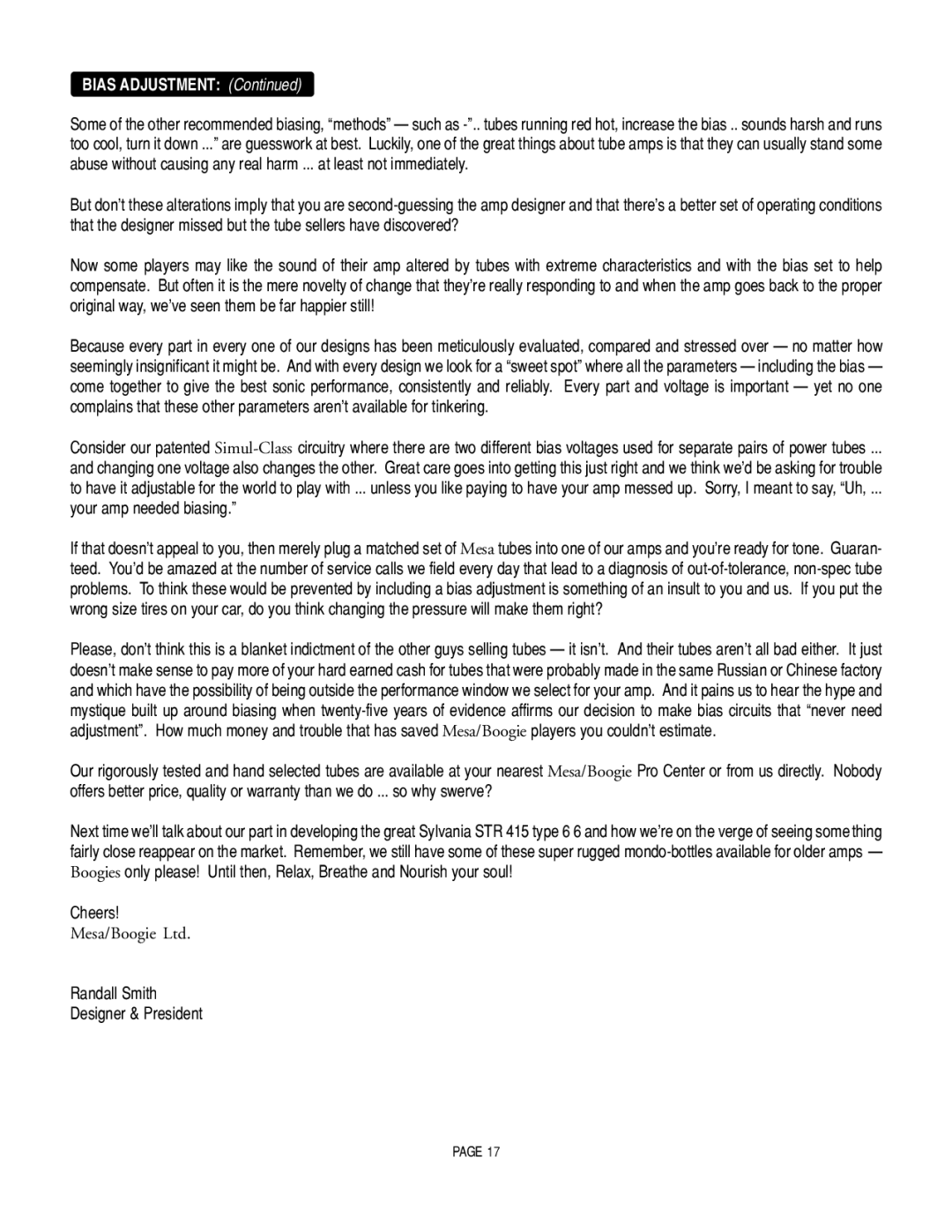DC3 specifications
The Mesa/Boogie DC-3 is a highly regarded guitar amplifier known for its versatility, power, and distinctive tone. Introduced during the early 1990s, the DC-3 has become a staple among musicians who appreciate its unique blend of classic and modern sounds. The amplifier is part of the Mark series, renowned for its innovative design and exceptional sound quality.One of the standout features of the DC-3 is its all-tube preamp, which contributes to its warm and rich tonal characteristics. The amplifier utilizes three 12AX7 tubes in the preamp stage, providing a dynamic response that enhances the natural tonal qualities of the guitar. This all-tube configuration is complemented by a powerful 2x6L6 power tube setup, delivering a powerful 30 watts of output. This combination allows the DC-3 to produce a wide range of tones, from clean and sparkling to thick and saturated drive.
The DC-3 is equipped with a unique two-channel design, offering a Clean channel and a Lead channel, each with its own set of controls for ultimate tonal shaping. The Clean channel is characterized by its bright and articulate sound, making it suitable for a variety of genres, including jazz, pop, and rock. The Lead channel, on the other hand, offers greater gain and sustain, perfect for heavier styles like hard rock and metal. These channels can be blended together using the shared EQ, allowing for a truly customizable sonic experience.
Mesa/Boogie's innovative graphic equalizer further enhances the versatility of the DC-3. It features a five-band EQ that allows players to sculpt their sound with precision. This feature makes it easy to dial in the perfect tone for different performance environments, whether in the studio or on stage.
The DC-3 also includes a built-in reverb, adding depth and ambience to the overall sound. This is a valuable addition for musicians looking to enrich their performances without the need for additional effects pedals.
Robust construction and attention to detail are hallmarks of Mesa/Boogie amplifiers, and the DC-3 is no exception. It is built to withstand the rigors of touring and the demands of professional musicians. With its impressive tonal palette, reliable performance, and durable design, the Mesa/Boogie DC-3 continues to be a favorite among guitarists, making it a worthy investment for anyone serious about their craft.
